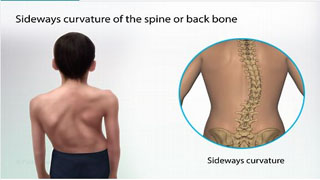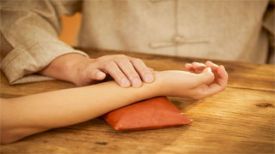
There are currently many methods for correcting scoliosis, including the CLEAR Institute scoliosis correction therapy in the United States, brain learning training, and Schroth therapy in Germany.
The century old Schloss scoliosis correction system is currently the best treatment option in the field of conservative treatment of scoliosis worldwide. This system has been passed down for three generations by the Schloss family in Germany for a hundred years, and has now formed a complete and efficient spinal column scoliosis correction method with "Schloss gymnastics and Schloss GBW braces" as the core.
What is Schroder therapy?
Katharina Schroth, founder of Schroth method in Germany.
Schroth founder herself is a scoliosis patient. In order to improve her scoliosis problem, she has also worn a back brace, but the brace restricts her physical activity, which makes her feel very painful.
Her initial idea was to hope that her body could stand upright and break free from the burden of life. Later, she found a way to control her scoliosis through breathing techniques and practice, and opened a clinic with her daughter.
In the early stages, they used conservative therapy to treat many patients with severe scoliosis, hunchback, and other spinal deformities, and achieved excellent therapeutic effects.
Schroder therapy is a non-surgical option for treating scoliosis, and customized exercises are provided for each patient to restore the bent spine to a more natural position. The goal of the exercise is to rotate, elongate, and stabilize the spine in a 3D plane.
Although Schroder therapy is tailored to individual treatment plans, it includes three important components:
1. Restore muscle symmetry and align posture
2. Practice breathing to bring gas to the concave side of the body
3. Pay attention to posture in daily life
In addition, Schroeder has a complete and mature evaluation classification scheme for the classification of scoliosis types.
Schroeder's lateral bending curve classification
3 arcs
At the beginning, the Schr ö dinger therapy mainly divided the body into three parts: the shoulders as a part, the middle chest ribs as a part, and the lower pelvis and lumbar vertebrae combined as a part.
3 arcs, which means you can see that the entire spine has 3 arcs (as shown in the figure below). Generally, thoracic scoliosis is the main cause. After thoracic scoliosis occurs, due to the biomechanics of the human body, the head will always remain in a neutral position, so compensatory bending will occur in the cervical and lumbar vertebrae to maintain trunk balance. And the pelvic girdle and scapular girdle will rotate in one direction, while the thorax will rotate in the opposite direction, and at the same time, the laterally shifted parts will rotate backwards.
4-arc shape
The Schr ö dinger therapy refers to the type of scoliosis in patients with scoliosis as 4-arc scoliosis
4-arc shape
Scoliosis is mainly caused by lumbar scoliosis. After scoliosis occurs in the lumbar spine, it gradually causes compensation in the thoracic, cervical, and lumbosacral vertebrae, resulting in a 4-arc scoliosis. The scoliosis of the spine is three-dimensional, and in a 4-arc scoliosis, the pelvis and thorax twist in the same direction, while the lumbar spine and scapula twist in opposite directions.
The above two types are the main classifications of scoliosis, while other types of scoliosis curves are further subdivided from these two types. However, in treatment, 3-curve and 4-curve scoliosis are used for extension and application.
Multi arc type
There is currently no effective method to correct multi arc scoliosis. In treatment, attention should be paid to differences. The treatment methods for 3 arc and 4 arc scoliosis are not suitable for the treatment of multi arc scoliosis.
What is the main focus of Schroder therapy?
The main contents of Schroder therapy include respiratory training, muscle strengthening, and correction of daily posture.
The main treatment concept is that after excessive posture correction and breathing exercises, patients need to perform a strengthening exercise of maximum body contraction to allow the body to remember the best position.
In addition, to successfully correct scoliosis, one must not only maintain good posture and exercise, but also avoid incorrect movements.
1. Breathing exercises
In Schroeder therapy, the system generally believes that breathing is the key to correcting scoliosis.
Patients with scoliosis must learn to correct their breathing patterns and consciously direct inhaled gases towards the concave position of the chest to release the restricted movement of the ribs. Fill the lungs with air that have less ventilation to promote correct posture. Shrink the convex areas to prevent them from expanding, and guide breathing to the relaxed muscles in the concave areas.
Rotating angular breathing is the core of Schroeder therapy.
The correction training for scoliosis strictly follows the principle of "three sides and one line", that is, we need to readjust them back to a stable state in the sagittal, coronal, and horizontal planes, and at this moment make the spine look straight. During the next inhalation and exhalation, we need to maintain the static support pull training of various parts of the body, pay attention to introducing the airflow into the concave side to make it convex, and the distorted chest will be straightened between the impact of breathing force.
This type of breathing training performed in a neutral spinal posture after adjustment is called "rotational angular breathing training".
This breathing method is the only treatment that can open the concave side of the curve, and no other passive treatment can achieve this. Only active breathing movements can achieve this.
2. Restore muscle symmetry
The Schr ö dinger therapy includes a large number of rehabilitation exercises for correcting scoliosis.
Scoliosis can cause some muscles in the body to become overly tense and stretched. Schroeder therapy involves strengthening training for various uncoordinated muscles in the body.
For abdominal muscles:
In scoliosis, the pelvis and thorax (as well as the scapula) rotate relative to each other, which affects all abdominal muscles.
Assuming the spine is convex to the right, the right external oblique muscle to the left internal oblique muscle will form a diagonal elongation, as shown in a-b in the figure; This will cause the rib crest to move outward and backward (a), as well as the hip on the concave side to move backward and outward. And the muscles of c-d are shortened, moving the hip band under the anterior and posterior rib protuberance forward and inward.
It should be noted that in scoliosis, whether the muscles are excessively stretched or contracted, these muscles are weak and require muscle strengthening training!
3. Daily posture attention
Katharina Schroth heavily relied on mirrors in her initial practice, as mirrors could help her patients cultivate their posture awareness.
Realizing the correct position of the spine is the first step in correcting it, so posture awareness is particularly important in daily activities.
At present, scoliosis has become the third major "killer" of children and adolescents' health in China after obesity and myopia, and the prevention and control situation is severe. Therefore, it is important to correctly master the rehabilitation treatment methods for scoliosis.


